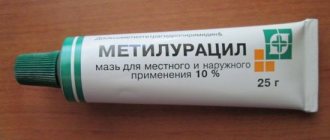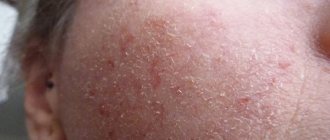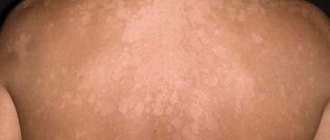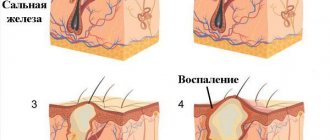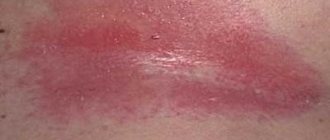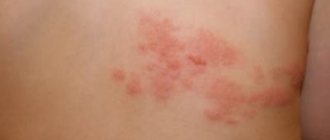Fungus of the skin, nails or mucous membranes are the most common dermatological diseases. All of them are treated according to approximately the same principle and successfully resolve within a few weeks. A separate category of diseases consists of deep mycoses - a fungal infection in which pathogenic microflora affects the entire body, including the most important internal organs. Deep mycoses and their causative agents have been studied for many years, but even today they pose a serious danger and are difficult to treat.
Deep mycoses: what is it?
Deep mycoses are a form of damage to the body by pathogenic microflora. The disease can be caused by several different types of fungus. The peculiarity lies in the systemic damage, that is, the fungus spreads not only to the skin, but also to the mucous membranes and internal organs. With deep mycoses, even the nervous system and bone tissue can be affected.
Deep mycoses affect internal organs
The study of deep mycoses is carried out at the Research Institute of Mycology - this is an institute whose main work is aimed at studying the behavior of fungal microflora and drawing up new treatment regimens for deep mycoses of the skin and internal organs.
Despite the high level of development of modern medicine, deep mycoses still pose a serious problem for doctors. This is due to the characteristics of the microflora that causes this disease. Pathogens of deep mycoses quickly develop resistance (resistance) to various types of antifungal antibiotics, which are called antimycotics.
A few facts about deep mycoses:
- very difficult to treat;
- affect the entire body;
- provoke weakening of the immune system;
- can be caused by more than 20 types of fungi;
- occur in a severe form.
Deep systemic mycoses are a favorable environment for the development of secondary infection. This is due to deep damage to the body and a noticeable decrease in immunity against the background of a fungal disease. Lack of treatment for deep damage to the nervous system and internal organs can even result in death.
How can you get infected?
Most fungi live in soil, plants, water, bird droppings, dust, etc., in these endemic areas.
Infection can occur from soil and water through microtrauma to the skin, inhalation of dust and contaminated air.
With the migration of the population, fungi successfully capture more and more new territories. The patient himself does not transmit the infection; transmission is always only indirect.
When it enters the body, the fungus multiplies rapidly and transforms into a tissue form that is not dangerous to contact. But with the sputum and feces of the patient, the tissue form is released into the external environment and here again transforms into the mycelial one.
With this form, its ingestion already leads to the appearance of mycosis. Activation in the future depends on the strength of the patient’s immunity. Among the internal fungi, which are harmless until a certain period, candida, aspergillus, mold fungi and actinomycetes can be noted. Today, the main cause of this condition is AIDS. The prognosis in this case, of course, cannot be good.
In the photo below, you can visually familiarize yourself with deep mycoses of the skin:
Reasons for the development of the disease
Deep mycoses develop in two cases - the presence of an untreated fungal disease with subsequent progression, or a severe decrease in immunity, in which nothing prevents the active reproduction of the fungus and damage to more and more new body systems.
Every person encounters different types of fungus at least once in their life. The most common form of mild fungal infection is thrush or candidiasis. The disease is localized only to the genitourinary system, affecting the vagina or glans penis. Thrush can be treated quite successfully in 7-10 days, but forever leaves a deep mark on the human immune system. The patient who has recovered from this disease remains sensitive to the action of this type of fungus. As a result, thrush often recurs and with each new episode it becomes more difficult to cure.
The same is true for other fungi. Infection with mold, yeast-like fungi or dermatophytes does not leave the body without leaving a trace. Nevertheless, timely and adequate therapy will help destroy pathogenic microflora and prevent the development of deep mycosis. The exception is people with severe immunodeficiency. In this case, the fungus quickly comes into force and develops resistance to the action of drugs. A person’s own immunity does not resist the development of a fungal infection, and it affects more and more organs and systems.
The term “deep mycosis” does not mean the number of affected organs, but rather the degree of growth of the mycelium of pathogenic fungi. The causative agent of the disease literally “takes root” in the body and it is very difficult to get rid of it.
How does infection occur?
Today, about 20 types of fungal infections are known that can provoke the development of deep mycosis. Fortunately, most of them are endemic, that is, characteristic of a limited area of the globe.
The largest number of cases of infection with deep mycoses has been recorded in countries of the tropical zone, where high temperatures and humidity remain all year round. These are mainly the countries of Southeast Asia, Africa, South and Central America, as well as Mexico, Australia and the southern United States.
Therefore, in former times, residents of Russia extremely rarely suffered from this disease, but with the development of tourism and increased migration, the situation has changed dramatically. Now, every year, hospitals in different regions of the country receive patients diagnosed with various deep endemic mycoses, and some of them have not been abroad and have not had contact with foreigners.
This paradox can be explained extremely simply: a sick person is a carrier of an infection that he spreads to the external environment. And since pathogenic fungi have high adaptive properties, they successfully survive in new conditions and begin to actively parasitize residents of areas that are not typical for them, for example, central and northern Europe.
Risk factors
As has already become clear, deep mycosis is not a common disease, but this does not make it any less dangerous. Doctors say that some people simply have a tendency to mycoses. If you place two people in the same conditions, one of them will get mycosis, and the other will not. Risk factors, in addition to immunity, are also previous diseases.
The main risk factors for developing this dangerous disease are:
- HIV positive status;
- diabetes;
- autoimmune diseases;
- tendency to dermatological diseases;
- unsystematic use of glucocorticosteroids;
- chemotherapy and radiation therapy;
- long-term antibacterial therapy.
HIV leads to the development of severe immunodeficiency, so the body of people infected with this virus is very sensitive to the action of various pathogenic microbes and fungi. The difficulty lies in the ineffectiveness of treatment with traditional means, since due to immunodeficiency, pathogens quickly become insensitive to tablets.
HIV infection makes the body defenseless against pathogens
Fungus in diabetes mellitus is caused by a violation of one’s own microflora due to high blood sugar levels. Systemic mycoses in people of this group are usually caused by opportunistic microorganisms that are always present in the body, for example, Candida yeast.
If a person is prone to dermatological diseases, sooner or later he will encounter a fungal infection. This is true for chronic diseases that are not treated, but healed. These diseases include psoriasis or severe eczema. With these disorders, the protective function of the skin is weakened. Any damage to the inflamed epidermis becomes a gateway for infection, including fungal infections. Due to a general weakening of the immune system, the body itself is not able to resist foreign agents, so in patients with psoriasis, a fungal infection quickly turns into a form of severe systemic mycosis.
Glucocorticosteroids for external use are an important part of the treatment of psoriasis and other diseases. These drugs treat one disease, but can cause the development of another disease, such as mycosis. Glucocorticosteroids require correct and balanced handling. Unsystematic use of these drugs greatly weakens the body.
Treatment of cancer and chemotherapy are all factors that increase the risk of developing mycosis. The disease can also be caused by long-term antibacterial therapy, for example, with tuberculosis.
Chemotherapy and other aggressive treatment methods significantly reduce immunity
Why is fungus dangerous?
For deep mycoses, treatment should begin immediately. This form of fungal infection negatively affects the functioning of the entire body as a whole, and not just individual systems.
The fungus itself is a parasite. It lives at the expense of the host organism. For example, with onychomycosis (nail lesions), destruction of the nail plates is observed. This is due to the fact that the fungus feeds on keratin, which acts as the “building material” of the nail plates. When its amount decreases, the nails weaken, collapse and peel off.
Mycoses that affect the mucous membranes, the same as thrush, feed on “beneficial” bacteria. As a result, an imbalance occurs in the microflora of the organ and specific symptoms appear.
When internal organs are damaged, the fungus “eats” beneficial bacteria that protect the body from foreign microorganisms. The result is malfunction of the affected organs. Thus, a symptom of vaginal fungus will be severe itching caused by a violation of its acidity, and if the stomach is affected, digestion is disrupted and diarrhea develops. These are just harmless examples of diseases that can be treated quite successfully. With deep systemic mycosis, when internal organs, skin, nervous system and mucous membranes are simultaneously affected, the symptoms are much more severe. This form of the disease in some cases can even lead to death.
Types of deep mycoses
Deep mycoses can be caused by almost any fungus. About 20 potential causative agents of this form of the disease are known in medicine. Each type of deep mycosis has its own specific course and symptoms.
The most common forms of the disease:
- chromomycosis;
- penicilliosis;
- paracoccidioidosis;
- histoplasmosis;
- coccidioidosis.
There are also certain types of infectious diseases caused by fungal microflora. Fungal prostatitis is a serious disease of the male genitourinary system, which is difficult to treat and can lead to infertility.
The most dangerous form of the disease is fungal meningitis. This pathology is characterized by severe damage to the meninges by the fungus. The symptoms are completely the same as those of infectious meningitis. Due to the specificity of the fungal microflora, this type of meningitis is very dangerous. Symptoms of severe damage to the nervous system develop, which can lead to death.
No one is immune from fungal meningitis, but most often the disease is diagnosed in children and the elderly.
Chromomycosis: features and symptoms
One of the forms of chromomycosis
This type of disease is caused by the Dematiateae fungus. This representative of the family is found in soil, fallen leaves, and humus. You can “meet” this type of fungus mainly in rural areas. The fungus prefers hot climates.
Infection occurs against the background of decreased immunity, as well as when pathogenic microflora enters open wounds. This fungus affects the skin and subcutaneous tissue. Symptoms of the disease:
- general weakness;
- prostration;
- changes in the epidermis.
With this form of the disease, nodules appear on the skin, the affected area begins to peel off, and the structure of the epidermis itself changes. Large areas of the body are usually affected - buttocks, back, abdomen, chest. Chromomycosis can take different forms. Most often, the lesion looks like a nodular rash, but tumor-like formations like warts may appear, or sclerotic areas may appear on the affected epidermis with subsequent scarring.
Penicilliosis
The disease is caused by the mold Penicillium. Pathology refers to the most severe forms of mycosis. The disease primarily affects the mucous membranes and internal organs.
Specific signs:
- damage to the middle ear (otitis media);
- dermatomycosis;
- ulcerative neoplasms on the mucous membranes and skin;
- damage to the respiratory system;
- brain abscess.
This form of the disease is detected primarily in people with HIV. Penicilliosis is often fatal.
Paracoccidioidosis
The disease is caused by the fungus Blastomyces. Deep mycosis caused by this fungus has the following signs and symptoms:
- breathing problems;
- ulcers of the oral mucosa;
- swollen lymph nodes;
- productive paroxysmal cough;
- fever.
With this form of the disease, there is a deterioration in appetite and rapid weight loss. The disease affects the skin, the rash resembles small blisters with cloudy contents.
Histoplasmosis
Cutaneous manifestations of histoplasmosis
The disease is caused by Histoplasma capsulatum, a fungus that attacks the lungs. Specific symptoms are signs of acute respiratory viral infection with a predominant lesion of the bronchopulmonary system. In later stages, the disease affects the skin. Small nodules and ulcers form on the body, resembling pustular psoriasis.
Coccidioidosis
The pathology is caused by the fungus Coccidioides immitis. This is a deep mycosis of the skin; with cutaneous dermatomycosis, large areas of damage to the epidermis of the body appear. The disease is characterized by severe weakness, fever, and productive cough. Large pink or red growths with pronounced peeling appear on the skin. The epidermis swells, but does not hurt.
This disease occurs mainly in countries with hot climates.
Symptoms
Cladosporiosis is a neurotropic fungus, a saprophyte of soil and plants. Affects the skin and brain. The route of infection is unknown. The course is progressive, with an unfavorable prognosis for brain damage. The main symptom is the appearance of a black, non-inflammatory spot with peeling on the palms. If the brain is damaged, there may be: cephalgia, fever, drowsiness, brain abscesses. There are no preventative measures.
Rhinosporidiosis - occurs in hot countries. Settles on the mucous membranes of the nose, eyes and vagina. Clinic: at the entrance site, polypous growths resembling cauliflower grow on the mucous membranes. Polyps are covered with viscous mucus. They can grow to large sizes. They are well supplied with blood vessels, easily injured and bleed. There are no precautions.
Mycetoma – progresses very slowly. The fungus is a soil saprophyte. First, at the site of penetration, a painless nodule appears in the skin, which begins to grow. Affects the skin, skin, muscles and fascia, bones of the arms and legs; usually on one side. Lymphostasis often develops, the leg is deformed, there are growths in the form of tumors, but with many fistulous tracts and pus. Agricultural workers who do not maintain hygiene, have microtraumas of the skin, prefer to walk barefoot, and are hypotrophic often fall ill.
Mucorosis is a fungus that lives in mold on food and in the air.
It affects the ears, skin and tissue, internal organs (respiratory, kidneys and liver, gastrointestinal tract, central nervous system). Orange pickers and diabetics are more likely to suffer. Characterized by otitis and pyoderma with ulcers on the skin.
Chromomycosis is infection of any wound with black mold. It is often found on rotting leaves and trunks. It has a long incubation period - up to several years. At the site of infection, a small bump appears, which begins to grow and turns into a large wart. Later they multiply, enlarge, form ulcers covered with crusts or give red plaques on the skin with clear boundaries. Scar healing. It affects large folds of skin - the groin, under the buttocks, the inner side of the thigh and lower leg.
Sporotrichosis – affects the skin, pancreas, mucous membranes; respiratory organs, kidneys and liver. The fungus lives on plants and in soil. Infection occurs through microtraumas - a prick from a rose thorn, for example. You can also become infected through the respiratory tract or through ingestion of contaminated material. The infection can be transmitted from pets and armadillos through scratching. Hidden period – up to 3 months. There is no pain or fever, but there is no self-healing. The infection is prone to recurrence.
Blastomycosis is more common in America and Canada. It affects the skin and lungs - purulent granulomatous foci appear here. Transmission is respiratory and contact. Farm workers are getting sick. The lesion is symmetrical; torso, less often face and arms. There is nodular or exudative erythema on the skin; in the lungs - there may be a flu-like syndrome. No precautions have been taken.
Coccidioidosis - in 60% of cases there are no symptoms. It often ends in autosanation when the lungs are damaged. Distribution occurs hematogenously. The infection is respiratory.
It affects the skin and internal organs and bones in the form of granulomatous inflammation. The face, neck, tailbone, buttocks, and perineum are most often affected. Exudative and erythema nodosum and a measles-like rash appear on the skin. On the skeletal side – osteomyelitis and edema abscesses; brain - meningitis.
Cephalosporiosis - affects the skin, bones and internal organs. Mushrooms are natural saprophytes. The fungus penetrates through skin microtraumas.
Histoplasmosis - the lungs are immediately infected. Next, the fungus settles hematogenously in the mucous membranes, skin, bone marrow, liver and spleen. It is considered a particularly dangerous mycosis. The pathogenic fungus lives in red soil, bird droppings and bat excrement. At risk are HIV patients and old age. The infection is respiratory. Course - with an uncomplicated pulmonary form, self-healing may occur; in chronic forms it gives cavities and affects the lungs completely. Mortality 80%. Manifestations on the skin - nodes and ulcers. The face, mouth and nasopharynx, trunk and limbs are affected.
Diagnostics
To make a diagnosis it is necessary to undergo tests. A scraping of the affected skin and a bacterial smear from the nose or throat are taken. Additionally, a general and biochemical blood and urine test may be prescribed. A biopsy of the affected skin is performed, followed by histology.
Deep mycoses are rare pathologies that masquerade as other diseases, so diagnosis is often complicated.
It is important to differentiate fungal infections from diseases with similar symptoms
Complications
They always occur if the disease is not diagnosed and has not received proper treatment. For example, acute histoplasmosis is common, in pulmonary and cutaneous forms. In a chronic course, without treatment with antimycotic antibiotics, mortality can reach more than 60% of the number of infected people who did not take care of the treatment of the acute form.
Chromomycosis has several forms - from nodular to scaly hyperkeratotic. The manifestation of the resulting outgrowths often leads to co-infection. Deep mycosis can cause restriction of movement or the development of squamous cell carcinoma.
Treatment principle
Treatment of deep mycoses depends on the type of pathogen. In each case, therapy is selected individually. In this case, systemic treatment is used - the simultaneous use of ointments and creams, tablets, and injections. It is impossible to cure deep mycosis only with a remedy for external use.
The basis of treatment is fungicidal drugs. Medicines in this group act on the protein of the fungus, destroying it from the inside. Treatment of deep mycosis is carried out in a hospital and depends on the type of fungus. For example, damage to the body by yeast fungus is treated with the drugs Amphotericin B and Flucytosine. For other forms of the disease, Itraconazole, Ketoconazole tablets, and corticoid drugs may be prescribed.
In addition to systemic therapy for mycosis, general restoratives are used aimed at activating the patient’s own immunity. Symptomatic treatment includes taking antipyretics for fever, antipruritic tablets for skin lesions and vitamin complexes.
Treatment of deep mycosis is a long process. To successfully defeat the causative agent of the disease, complex therapy is necessary. Sometimes several antifungal agents are used at once for a systemic effect on the body.
You cannot treat deep mycosis on your own. Therapy is selected only by a doctor. It is important to remember that self-medication or delay in going to the clinic can lead to serious consequences. In severe cases, deep damage to the body by the fungus can cost the patient his life.
Prevention
The development of the disease can be prevented by timely treatment of chronic diseases and the use of measures to strengthen the immune system. Personal hygiene should be observed and contact with potential sources of fungus should be avoided. Quite often, infection occurs when visiting countries with hot climates, so you should be especially careful in Africa, South America and Southeast Asia.
It is important to drink only clean water. Drinking water from open reservoirs can cause pathogenic microflora to enter the body. Any injuries and skin lesions must be immediately treated with antiseptics to avoid infection, including fungal infections.
The essence of the problem
In total there are about 20 types of deep mycoses. Most often they are characteristic of the tropics and subtropics, where the climate is humid and warm. These are some regions of Africa, America, Australia, and Southeast Asia. All of these pathologies, having a common pathophysiology, differ in diagnosis and clinic.
Many pathogens of these diseases exist as saprophytes in the external environment or inside the body. To activate them, one indispensable condition is needed - weakening of the immune system. Then they enter the blood and cause disease. There are also superficial mycoses - they are dermatomycosis and are transmitted contagiously. They do not have a hidden incubation period.
Over the past decades, mycoses have become much more common, even in northern European countries.
This is associated with large migration of people around the globe and tourism. In addition, many new risk factors have emerged:
- uncontrolled long-term use of corticosteroids, cytostatics, antibiotics;
- radiation and chemotherapy;
- immunodeficiency states;
- organ transplantation;
- autoimmune processes in the body - rheumatism, psoriasis, scleroderma, diabetes;
- uremia;
- malnutrition, etc.
There is a risk group among patients:
- endocrinopaths, agricultural workers, foresters, alcoholics, ornithologists, speleologists, patients with oncology, HIV;
- workers in vegetable stores and cheese production;
- laboratory technicians dealing with fungal cultures.



